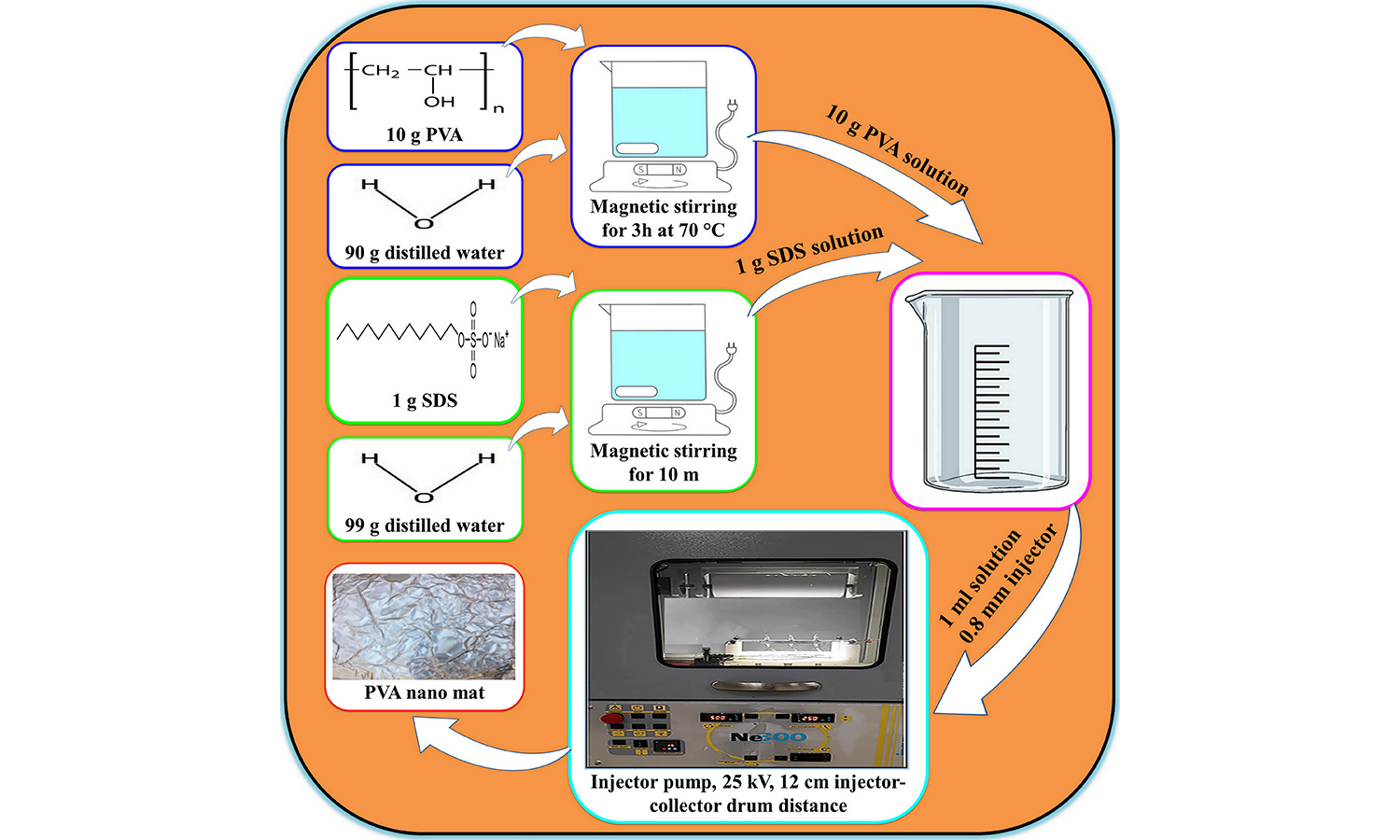Measurement of the elastic properties of epoxy resin/polyvinyl alcohol nanocomposites by ultrasonic wave velocities
Vol. 16., No.6., Pages 591-606, 2022
DOI: 10.3144/expresspolymlett.2022.44
DOI: 10.3144/expresspolymlett.2022.44
GRAPHICAL ABSTRACT

ABSTRACT
The polyvinyl alcohol (PVA) nanofiber mats are produced using the electrospinning method. The epoxy resin (ER)/polyvinyl alcohol (PVA) nanocomposites are obtained by adding PVA nanofiber mats into neat epoxy resin (ER) as 5, 10, and 15 layers. The elastic properties (elastic constants, Young’s modulus, Poisson’s ratio, and Shear modulus) of the neat ER, and the ER/PVA nanocomposites, are determined by ultrasonic longitudinal wave velocity (VL) and shear wave velocity (VS) measurements. The morphology of the neat ER and the ER/PVA nanocomposites is investigated using scanning electron microscopy (SEM). The results obtained from SEM images showed the ER/PVA nanocomposites have a transversely isotropic structure. The VL value of isotropic neat ER was obtained higher than the value of VL33 and VL45° but lower in x(1) direction for VL11 in the ER/PVA nanocomposites. The velocity values of ultrasonic shear waves propagated in x(1) direction and polarized in y(2) direction in the ER/PVA nanocomposites are determined as higher than the velocity values of ultrasonic shear waves propagated in z(3) and polarized in x(1) direction. Also, the value of E3 determined in the z(3) direction is found to be significantly higher than the value of E1 determined in the x(1) direction when the number of PVA layers increased in the ER matrix. The value of shear modulus (G31) is found as 1.53, 1.76, and 1.61 GPa for the ER/PVA-5, the ER/PVA-10, and the ER/PVA-15, respectively. The Poisson’s ratio values of the ER/PVA nanocomposites are determined as between 0.473–0.502 and 0.247–0.276 for μ11 and μ31, respectively. On the other hand, the degree of anisotropy in the ER/PVA nanocomposites is determined using ratios of E1/E3 and μ11/μ31. A small degree of anisotropy in dynamic Young’s modulus (0.93–0.99) is observed, while a higher ratio is observed for Poisson’s ratio (1.71–2.03) with increasing PVA layers in neat ER.




